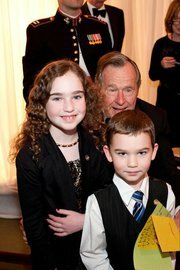 Today’s blog post come from Gabrielle Levy, co-founder of . Caring Kids Card participated in an Adopt A Soldier Make A Difference Day event.
Today’s blog post come from Gabrielle Levy, co-founder of . Caring Kids Card participated in an Adopt A Soldier Make A Difference Day event.
On October 22, people came out and volunteered for the Hands On Network “Make A Difference Day“, stuffing backpacks, making cards, care packages, helping soldiers, and lots more. There were 2,000 volunteer positions around Fairfax County.
“Supervisor Cook is all about volunteering and he is in our community. And celebrating our community and the soldiers that have to be deployed. I have gotten packages. Being tired and receiving care packages it is really exciting. Anyone can send cards or pictures.” said Ryan Kelly, Supervisor Cook Chief of Staff.
Jim Tragakis, Past President and current board member of Volunteer Fairfax said, “I hope it teaches kids the importance of the community.”
At Lake Braddock Secondary School, here is what they were doing. Many people were putting together boxes, stuffing boxes, taping boxes, making cards, writing addresses, stuffing packpacks, and writing shipping labels.
Ainsley, age 9 from Lorton, her dad is in the Air Force and she is in a military family. She was here “helping people and troops and having fun.” Everyone was having fun and helping the community. Ruby, age 3 1/2, said she is “having fun” and likes “to be with my mommy.”
![IMG_3238[1]](/wp-content/uploads/2011/10/IMG_32381-1024x768.jpg)
Gabrielle (9), Aiden (6), co-founders of Caring Kids Cards participating in an Adopt A Soldier Make A Difference Day event.
“I want kids to understand that kids are part of their community and help their community. What we’re doing is helping your neighbors and celebrating the people who leave home and help them because we all have a community. I am a retired soldier and my whole family is in the military.” said Mary Keeser, Founder of America’s Adopt A Soldier.
All of the care packages and cards made at Lake Braddock during “Make A Difference Day” will go to people in the military overseas. Lt. Colonel Mike was volunteering with his family. He said “I think it is great and a great way to give back. I am now on the other end of receiving care packages. I was in Kuwait for a year, so I know how it feels to get care packages.”
![IMG_3233[1]](/wp-content/uploads/2011/10/IMG_323312-1024x768.jpg)
Lt. Colonel Mike and his family made care packages on Make A Difference Day
The backpacks will go to children with parents in the military. “We are supporting the troops and getting stuff because they’re fighting and need them” said Connor, age 11, from Lorton.
Everyone was making a difference and having a good time. was proud to be a part of this great event.

 Today’s post comes from Davida Gatlin, Manager, Training and Technical Assistance for
Today’s post comes from Davida Gatlin, Manager, Training and Technical Assistance for 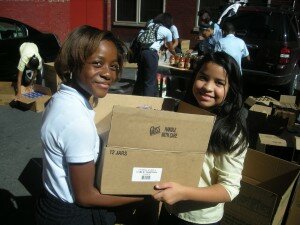 Participation in service-learning…
Participation in service-learning…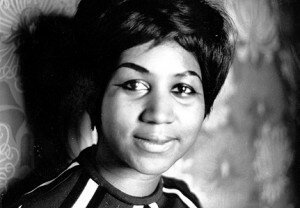 When you’re trying to engage youth in volunteering and service learning programs, it’s important to respect the skills and viewpoints that they can bring to the table. Positive relationships depend on mutual respect.
When you’re trying to engage youth in volunteering and service learning programs, it’s important to respect the skills and viewpoints that they can bring to the table. Positive relationships depend on mutual respect.
 Be creative! It may help to think about things we often take for granted. For example, school supply shopping. Just think! If everyone in the neighborhood, purchased an extra backpack and filled it with a few supplies for someone else, a student whose family may be at an economic disadvantage will have a need filled.
Be creative! It may help to think about things we often take for granted. For example, school supply shopping. Just think! If everyone in the neighborhood, purchased an extra backpack and filled it with a few supplies for someone else, a student whose family may be at an economic disadvantage will have a need filled. they will inspire more youth to take initiative as well. Whether its donating outgrown clothing and shoes or bringing lunch to senior citizens, lets bring in the school year the right way by celebrating summer through service!
they will inspire more youth to take initiative as well. Whether its donating outgrown clothing and shoes or bringing lunch to senior citizens, lets bring in the school year the right way by celebrating summer through service! Today’s post comes from Jie, Marcomm Manager with
Today’s post comes from Jie, Marcomm Manager with  Volunteers helped to teach and train the students at Shanghai Migrant School by giving them the opportunity to grow in character and develop important sports skills. Elyn, the project coordinator, was very thankful for all their help. She said, “Volunteers always help us to improve the quality of the children’s education. Without them, we would be nothing.”
Volunteers helped to teach and train the students at Shanghai Migrant School by giving them the opportunity to grow in character and develop important sports skills. Elyn, the project coordinator, was very thankful for all their help. She said, “Volunteers always help us to improve the quality of the children’s education. Without them, we would be nothing.” The project was a success. Although it was raining earlier that afternoon, three volunteers delivered a fun class for all twenty students. They taught the rules of the sport, they played team-building games, and finished the afternoon with a game of basketball. The enjoyable and playful atmosphere was obvious during the whole process. The close bonding between students and volunteers was simply showed through their gestures and conversations.
The project was a success. Although it was raining earlier that afternoon, three volunteers delivered a fun class for all twenty students. They taught the rules of the sport, they played team-building games, and finished the afternoon with a game of basketball. The enjoyable and playful atmosphere was obvious during the whole process. The close bonding between students and volunteers was simply showed through their gestures and conversations.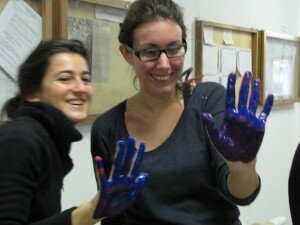 On Saturday April 16th we celebrated
On Saturday April 16th we celebrated 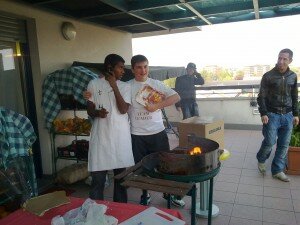 Other young volunteers spent the entire afternoon helping one of our regular volunteers, who is a professional chef (kind of like chef Ramsey), prepare a gourmet dinner for clients at A77 – a well known organization caring for AIDS patients. There was nice interaction between the clients (who came to the kitchen out of curiosity, for a chat, to say thank you or simply to ask what we were preparing for dinner) and our young volunteers. Everything felt natural. As I observed the kids, I thought “Could adults have done this any better?” The answer was no.
Other young volunteers spent the entire afternoon helping one of our regular volunteers, who is a professional chef (kind of like chef Ramsey), prepare a gourmet dinner for clients at A77 – a well known organization caring for AIDS patients. There was nice interaction between the clients (who came to the kitchen out of curiosity, for a chat, to say thank you or simply to ask what we were preparing for dinner) and our young volunteers. Everything felt natural. As I observed the kids, I thought “Could adults have done this any better?” The answer was no. Similarly, I was struck by the warmth that teens demonstrated to the homeless people for which we organized a bingo plus snacks afternoon. When I asked our teen volunteers what they thought of the experience they said they had never fully realized that some people really have close to nothing and that you can make them very happy with a small gift and a smile.
Similarly, I was struck by the warmth that teens demonstrated to the homeless people for which we organized a bingo plus snacks afternoon. When I asked our teen volunteers what they thought of the experience they said they had never fully realized that some people really have close to nothing and that you can make them very happy with a small gift and a smile. 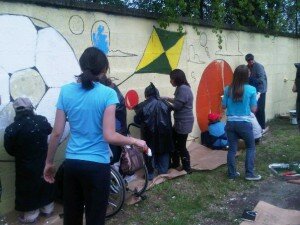 Another group painted a 20 meter mural together with the clients of our partner (a day care for disabled people). When I say together, I mean together: they all mixed up and had lots of fun. Sometime barriers are more in our minds than anyplace else.
Another group painted a 20 meter mural together with the clients of our partner (a day care for disabled people). When I say together, I mean together: they all mixed up and had lots of fun. Sometime barriers are more in our minds than anyplace else.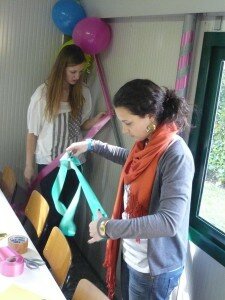 A group helped il Volo (whose clients are young people with borderline personality disorder) decorate a restaurant where they were hosting a big fundraising event the same night: hundreds of colored balloons were blown and placed everywhere to cheer up the generous donors (and make them even more generous).
A group helped il Volo (whose clients are young people with borderline personality disorder) decorate a restaurant where they were hosting a big fundraising event the same night: hundreds of colored balloons were blown and placed everywhere to cheer up the generous donors (and make them even more generous).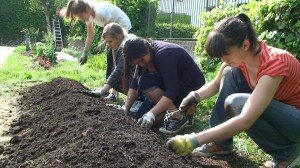 Other groups did gardening for our partner
Other groups did gardening for our partner 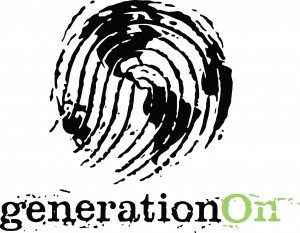


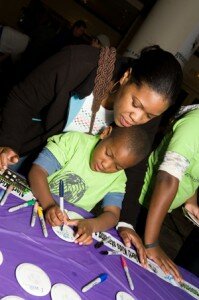 USA Weekend magazine: Over the past weekend, it recapped this year’s 20th Make A Difference Day, which it co-sponsored with HandsOn Network and Newman’s Own. It mentioned our launch of generationOn that fittingly included service projects and a tribute to extraordinary change-makers at The Extra Mile – Points of Light Volunteer Pathway in D.C. It noted our celebrity participants Madison Pettis and Corbin Bleu, and a nine-year-old volunteer who declared her experience packing toys as the “best day ever!”. It also noted the participation of Obama Cabinet members, including Secretary of Education Arne Duncan, in a KaBOOM! Playground build.
USA Weekend magazine: Over the past weekend, it recapped this year’s 20th Make A Difference Day, which it co-sponsored with HandsOn Network and Newman’s Own. It mentioned our launch of generationOn that fittingly included service projects and a tribute to extraordinary change-makers at The Extra Mile – Points of Light Volunteer Pathway in D.C. It noted our celebrity participants Madison Pettis and Corbin Bleu, and a nine-year-old volunteer who declared her experience packing toys as the “best day ever!”. It also noted the participation of Obama Cabinet members, including Secretary of Education Arne Duncan, in a KaBOOM! Playground build.
 Learning to Give offers lesson plans, activities and resources to educate youth about the power of philanthropy — sharing time, talent, and treasure.
Learning to Give offers lesson plans, activities and resources to educate youth about the power of philanthropy — sharing time, talent, and treasure. 2.
2.  6.
6. 
